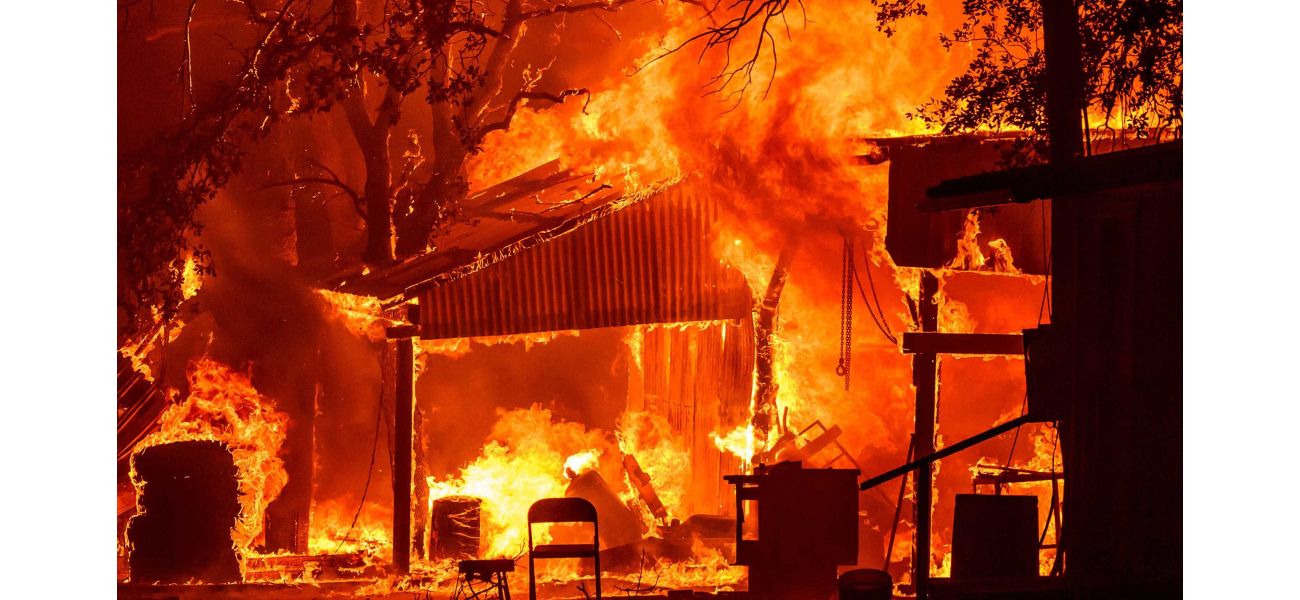A major wildfire component's arrival could mean trouble for California.
Early, devastating fires have ravaged California, occurring much earlier than expected.
September 23rd 2024.

This year, California has been facing a particularly intense and dangerous fire season. The usual time for the most extreme fire weather conditions to arrive has not yet come, but large, explosive, and destructive fires have already ravaged parts of the state. This has raised concerns that the season has the potential to be devastating.
The reason behind this early and intense fire season is a combination of extreme weather patterns and the effects of a warming world. As the climate changes, weather extremes are becoming more common and their impact is more volatile. So far, the overall statistics for the fire season in California seem to be in line with previous years. According to data from CAL FIRE, there have been more than 6000 wildfires that have scorched almost 1 million acres, which is close to the average. However, some of these fires have been far from typical.
In July, the Park Fire started in Northern California and quickly became the fourth-largest fire in the state's history. It grew at an alarming rate, covering an area the size of San Diego and destroying at least 700 structures. The Line Fire, which is still burning, became so violent last week that it created its own weather. Tim Chavez, a retired assistant fire chief with CAL FIRE, described how the nearby Bridge Fire grew incredibly fast, burning through about 19km of land in just one day.
What makes these fires even more unusual is that they occurred without the usual seasonal winds that are responsible for fanning some of the most destructive flames in California's history. The Santa Ana and Diablo winds, which originate in the desert and blow over mountains and out to sea, are notorious for creating bone-dry conditions that can easily ignite and spread fires. However, the fires this year have been fueled by what's on the ground.
According to Daniel Swain, a climate scientist at the University of California, Los Angeles, this year has seen almost double the amount of plant growth in some parts of the state compared to previous years. This is mainly due to two consecutive wet winters. However, the record-breaking heat this summer quickly dried out all this new growth, leaving it highly flammable. The US Drought Monitor shows that in early June, only about 1% of California was abnormally dry, but now more than 70% of the state is experiencing dry conditions or worse.
This pattern of wet winters followed by hot and dry summers is becoming more common due to climate change. As the world warms, the atmosphere can hold more moisture, which can lead to both extreme rainfall and dry spells. Swain compared it to a sponge that can hold more water and then release it in the wet season, but can also suck more moisture out of the ground during the dry season, leaving the soil drier and more prone to burning.
This cycle of wet winters and hot, dry summers is one of the most significant factors in the frequent and severe fire seasons in California. In areas where plant life is normally limited, a wet winter can lead to abundant growth of brush and invasive grasses, creating more fuel for fires. Swain explained that in a dry year, it is challenging for a wildfire to spread through these areas because there are natural fire breaks every few feet. But after a wet winter, any fire that starts can quickly spread and cause more destruction.
As we enter autumn, which is typically a critical time for fire season in California, the danger is far from over. September marks the start of the Santa Ana and Diablo winds, which can persist through May. Once these winds arrive, the situation for firefighters becomes even more challenging as the fires can suddenly shift and become more violent. Chavez is always concerned about what these winds could unleash on Southern California, which has already been identified as a potential hotspot for fire activity.
However, Chavez also noted that the Central Coast of California could also be at risk due to the immense amount of fuel that has yet to burn. Even if the Santa Ana winds hold off for a little longer, there is a possibility that similar fire weather conditions to those that facilitated the recent blazes in Southern California could reappear by the end of September, according to Swain. He is also concerned about a potential heatwave in late September or early October, which could further dry out fire fuels.
Furthermore, there is a worry that the state's rainy season may be delayed, as this usually helps to reduce fire activity. Swain's research has shown that the number of extreme fall fire-weather days in California has more than doubled since the early 1980s due to warmer and drier autumns caused by climate change. He explains that every year, there is a race between the winds and the rains to see which will win out. But this year, it is more likely that the winds will prevail in Southern California.
The reason behind this early and intense fire season is a combination of extreme weather patterns and the effects of a warming world. As the climate changes, weather extremes are becoming more common and their impact is more volatile. So far, the overall statistics for the fire season in California seem to be in line with previous years. According to data from CAL FIRE, there have been more than 6000 wildfires that have scorched almost 1 million acres, which is close to the average. However, some of these fires have been far from typical.
In July, the Park Fire started in Northern California and quickly became the fourth-largest fire in the state's history. It grew at an alarming rate, covering an area the size of San Diego and destroying at least 700 structures. The Line Fire, which is still burning, became so violent last week that it created its own weather. Tim Chavez, a retired assistant fire chief with CAL FIRE, described how the nearby Bridge Fire grew incredibly fast, burning through about 19km of land in just one day.
What makes these fires even more unusual is that they occurred without the usual seasonal winds that are responsible for fanning some of the most destructive flames in California's history. The Santa Ana and Diablo winds, which originate in the desert and blow over mountains and out to sea, are notorious for creating bone-dry conditions that can easily ignite and spread fires. However, the fires this year have been fueled by what's on the ground.
According to Daniel Swain, a climate scientist at the University of California, Los Angeles, this year has seen almost double the amount of plant growth in some parts of the state compared to previous years. This is mainly due to two consecutive wet winters. However, the record-breaking heat this summer quickly dried out all this new growth, leaving it highly flammable. The US Drought Monitor shows that in early June, only about 1% of California was abnormally dry, but now more than 70% of the state is experiencing dry conditions or worse.
This pattern of wet winters followed by hot and dry summers is becoming more common due to climate change. As the world warms, the atmosphere can hold more moisture, which can lead to both extreme rainfall and dry spells. Swain compared it to a sponge that can hold more water and then release it in the wet season, but can also suck more moisture out of the ground during the dry season, leaving the soil drier and more prone to burning.
This cycle of wet winters and hot, dry summers is one of the most significant factors in the frequent and severe fire seasons in California. In areas where plant life is normally limited, a wet winter can lead to abundant growth of brush and invasive grasses, creating more fuel for fires. Swain explained that in a dry year, it is challenging for a wildfire to spread through these areas because there are natural fire breaks every few feet. But after a wet winter, any fire that starts can quickly spread and cause more destruction.
As we enter autumn, which is typically a critical time for fire season in California, the danger is far from over. September marks the start of the Santa Ana and Diablo winds, which can persist through May. Once these winds arrive, the situation for firefighters becomes even more challenging as the fires can suddenly shift and become more violent. Chavez is always concerned about what these winds could unleash on Southern California, which has already been identified as a potential hotspot for fire activity.
However, Chavez also noted that the Central Coast of California could also be at risk due to the immense amount of fuel that has yet to burn. Even if the Santa Ana winds hold off for a little longer, there is a possibility that similar fire weather conditions to those that facilitated the recent blazes in Southern California could reappear by the end of September, according to Swain. He is also concerned about a potential heatwave in late September or early October, which could further dry out fire fuels.
Furthermore, there is a worry that the state's rainy season may be delayed, as this usually helps to reduce fire activity. Swain's research has shown that the number of extreme fall fire-weather days in California has more than doubled since the early 1980s due to warmer and drier autumns caused by climate change. He explains that every year, there is a race between the winds and the rains to see which will win out. But this year, it is more likely that the winds will prevail in Southern California.
[This article has been trending online recently and has been generated with AI. Your feed is customized.]
[Generative AI is experimental.]
0
0
Submit Comment





